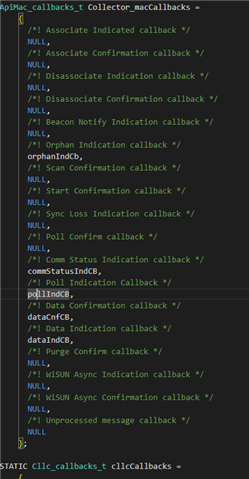Other Parts Discussed in Thread: SYSCONFIG
Tool/software:
The problem is very similar to this
After adding 20-21 sensors, we observe incorrect behavior.
From the dump we see that the coordinator does not send data to the sensor after a poll request. What can we check in our code?
RX and TX queue sizes set to 8. The problem depends on the number of sensors in the network.




